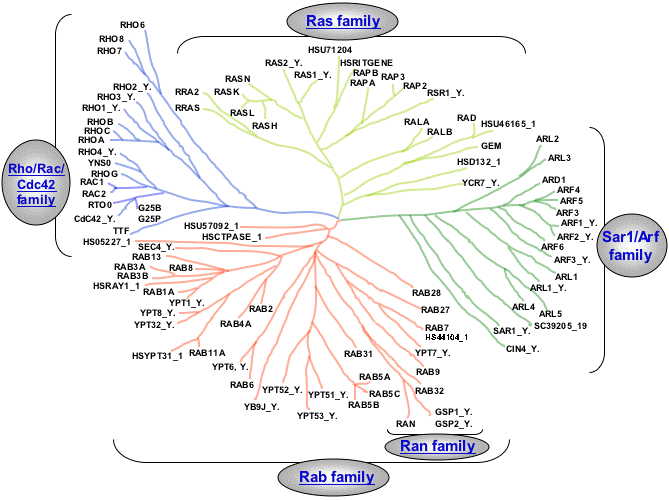
(taken from: Takai et al. (2001) Small GTP-Binding Proteins. Physiol. Rev. 81 (1):153.)
GTPases of the Ras superfamily represent a group of more than 100 known proteins involved in the control of numerous essential cellular functions, and in particular cell proliferation. They were grouped, according to sequence homologies, into five principal branches: Ras family, Rab family, Ran family, Rho/Rac/Cdc42 family and Sar1/Arf family.
Mutations in Ras proteins that block them in a constitutively active state are found in 30 to 60% of human malignancies. Ras-proteins have a molecular mass of 21 kDa. Suitable as a substrate for farnesyltransferase. While mutations in Ras proteins are found in 30 to 60% of human malignancies, other GTPases like Rho and Rac have also been linked to oncogenesis.
Rab proteins are small GTP-binding proteins that form the largest family within the Ras superfamily. Rab proteins regulate vesicular trafficking pathways, behaving as membrane-associated molecular switches.
Ran (Ras-related nuclear protein) is involved in diverse cellular processes like nucleo-cytosplasmic transport of proteins into the nucleus and RNA into the cytoplasm, mitotic spindle assembly, and post-mitotic nuclear assembly. The Ran-regulated nucleo-cytoplasmic transport through the nuclear core complex occurs in conjunction with importins and exportins.